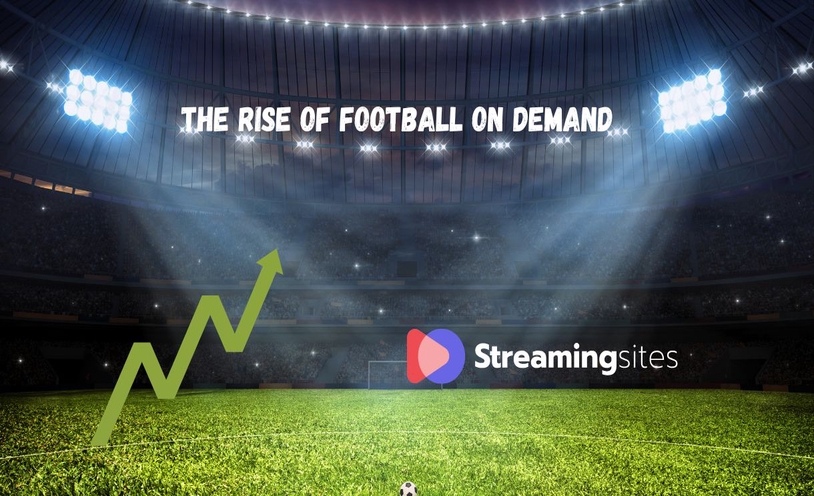
The Rise of 'Football on Demand': How Streaming Platforms Are Making Soccer More Accessible
The Rise of 'Football on Demand': How Streaming Platforms Are Making Soccer More Accessible
Television networks once controlled access to live soccer matches. Fans had to subscribe to expensive cable packages or rely on limited free-to-air broadcasts. Watching international leagues meant waiting for highlight reels or reading match summaries. Limited options left many supporters without real-time access to their favorite teams.
Online streaming changed how soccer is consumed. Digital platforms offer live games, match replays, and exclusive content. Fans no longer depend on scheduled television broadcasts. They can watch matches anytime on smartphones, tablets, and smart TVs. Streaming services have disrupted traditional broadcasting, giving users more freedom.
Soccer fans once struggled to watch games from foreign leagues. Broadcasters focused on domestic competitions, leaving international fans searching for alternatives. Many resorted to illegal streams, which were unreliable and low in quality.
Streaming services have bridged that gap. Platforms like DAZN, ESPN+, and Amazon Prime provide access to games from top leagues worldwide. The growth of digital broadcasting has significantly increased soccer’s availability. In 2023, soccer fans in the U.S. had access to over 3,000 games across 35 different networks, averaging more than eight daily broadcasts. This extensive coverage included nearly 100 different competitions, featuring over 900 teams from around the world. More leagues are reaching global audiences, allowing clubs to expand their fan bases beyond their home countries.
This surge in accessibility also means that fans are no longer confined to following only their local teams. An African fan can watch live coverage of a Bundesliga match, while someone in North America can tune into a Copa Libertadores game. Streaming technology ensures that geographical barriers no longer limit soccer.
Cable subscriptions were costly and often included channels unrelated to sports. Fans had to pay large sums even if they only wanted soccer content. Streaming services introduced flexible plans that cater to different budgets.
Monthly and yearly subscription options give fans control over their spending. Some platforms offer single-match purchases, allowing users to watch without long-term commitments. The lower costs make professional soccer more accessible to a wider audience.
Traditional broadcasts offered little beyond live coverage. Viewers had to rely on commentators for analysis, with limited additional insights. Streaming platforms provide interactive features that enrich the viewing experience and offer more control over how fans consume content.
Multiple camera angles, real-time statistics, and tactical breakdowns enhance engagement. Viewers can switch between different perspectives, zoom in on key plays, and access on-demand replays to analyze crucial moments in the game. Some platforms incorporate interactive overlays that display heat maps, player movements, and live win probabilities, giving fans a deeper analytical perspective.
Some services include behind-the-scenes content, interviews, and pre-match analysis. Exclusive documentaries, player profiles, and training session footage offer fans an inside look at their favorite teams and players. Streaming platforms also cater to different languages and regions, providing localized commentary and subtitles, ensuring accessibility for a broader audience.
Live chats and social media integration further enhance the experience. Fans can discuss matches in real time, share opinions, and interact with analysts or former players through Q&A sessions. Some platforms even allow users to participate in live polls, predicting game outcomes or selecting the best player performances. These activities deepen a fan’s connection to the sport, making each game more interactive and immersive. Additionally, new users can take advantage of the sign-up offer for Coral platform to start engaging with the sport, enabling them to become more involved in match discussions and predictions immediately.
Clubs and leagues now control their own media distribution. Many top teams have launched their own streaming platforms, providing direct access to exclusive content.
Manchester United’s MUTV and Barcelona’s Barca TV+ offer live games, training sessions, and historical matches. The English Football League’s iFollow service allows supporters to watch their team’s games from anywhere. Clubs engage with their fanbase without relying on third-party broadcasters.
High-speed internet and mobile applications have changed how people watch soccer. Streaming services optimize their platforms for smartphones and tablets. Fans no longer need a television to enjoy matches.
Apps offer notifications, highlights, and live scores. Features like offline viewing enable users to watch recorded matches without an internet connection. Mobile-friendly services cater to fans who are always on the move.
Despite the advantages, streaming services face challenges. Internet speed variations affect viewing quality. Some fans experience lag or buffering, especially in regions with weaker connections.
Broadcasting rights remain complex. Multiple platforms may hold rights to different competitions, requiring fans to subscribe to multiple services. Piracy is another concern, as illegal streams continue to attract users looking to avoid subscription fees.
More innovations will emerge as technology advances. Virtual reality experiences, interactive broadcasts, and AI-driven content personalization are likely to shape the future of soccer streaming. Services will continue evolving to meet the demands of modern viewers.